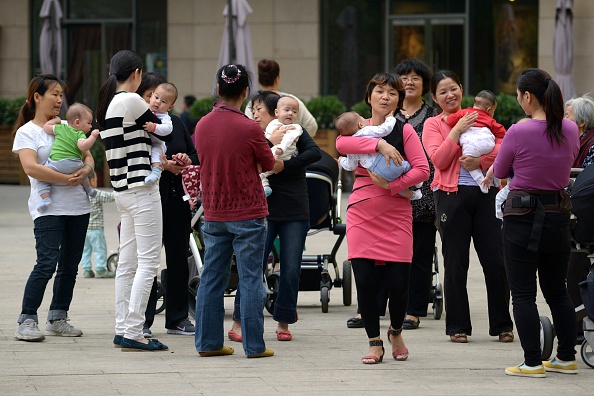
 Drifting Trade Ties
Drifting Trade TiesThe situation on both sides of the U.S.-China trade relationship continues to prove dynamic. The U.S. is attempting to craft a revised strategy to combat Beijing's economic influence, while still sticking with many of the fundamental policy decisions of the Trump administration. Meanwhile, China continues to evaluate the new Biden administration's every move, testing and prodding it along the way.
This week, U.S. trade chief Katherine Tai went before Congress to expound on the need for new strategies in the trade war, stressing protecting American industries under attack from rivals across the Pacific and calling China's trade practices "unfair," a refrain frequently heard during the Trump administration.
The U.S. federal government continues to hedge against China's rise, moving forward with a $110B proposal to strengthen America's tech sector, including AI and semiconductors. The Pentagon's bid to blacklist Xiaomi from U.S. investments on the grounds of military ownership was defeated in courts, striking down another Trump-era order against the Chinese tech industry.
Also, rumors that Vice Premier Liu, China's top economic envoy to the U.S., would soon be replaced were denied in an official statement from the Chinese Communist Party. Liu was the primary negotiator in the "Phase One" trade deal between China and the Trump administration, drawing domestic criticism for his perceived weakness in addressing U.S. tariffs. Read more on the Biden administration's strategy towards China in Canada, China and the U.S.—Has the Advent of the Biden Administration Changed Anything?, from Hugh Stephens, Distinguished Fellow, Asia Pacific Foundation of Canada.
 Counting on Growth
Counting on GrowthThe results of China's much anticipated decennial census were released this week, showing that China's population grew at the slowest rate in decades, including the lowest number of births since 1961 and a 40 million decrease in the number of working age people since 2010. While the government wouldn't project when its population may peak, some Chinese researchers estimate it will reach its height by 2025, which may pressure authorities to further loosen birth restrictions to avoid a population decline.
Census figures also reveal rising urbanization and education levels. China's urban population grew to 63.9% of the population last year from 49.7% a decade earlier, and university graduates rose from 1 million in 2000 to almost 9 million in 2020, likely resulting in an increase in productivity.
While population was once one of China's greatest strengths, some experts say they now must turn to productivity. It seems as though Beijing's policymakers are in agreement, as they plan to gradually raise the retirement age and increase migration from rural to urban areas over the next five years.The latest five-year plan also stresses better "vocational education and investment in scientific research, automation, and digital infrastructure," which could add 150 million workers to the workforce.
 Speaking Out or Thinking Twice?
Speaking Out or Thinking Twice?The United Nations held a virtual meeting on the situation in Xinjiang, with roughly 50 countries in attendance. The meeting, set up by the United States, Germany, and Britain, included human rights groups and other nations accusing China of human rights crimes against Uyghur muslims.
U.S. Ambassador to the U.N. Linda Thomas-Greenfield told the attendees the U.S. "will keep standing up and speaking out until China's government stops its crimes against humanity and the genocide of Uyghurs and other minorities in Xinjiang." China denounced the meeting as being "politically motivated" and based on "lies." Ahead of the meeting, China's U.N. Ambassador Zhang Jun also urged a handful of countries to "think twice" before attending the event.
Prepared by China-US Focus editorial teams in Hong Kong and New York, this weekly newsletter offers you snap shots of latest trends and developments emerging from China every week, while adding a dose of historical perspective.
- 2021-05-07 Time to Talk
- 2021-04-30 Academic Pandemic
- 2021-04-23 Carbon Cutting
- 2021-04-16 A Hopeful Climate
- 2021-04-09 Technological Frontiers
- 2021-04-02 Back to Basics
- 2021-03-26 The Biden Era
- 2021-03-19 “A Strong Smell of Gunpowder and Drama”
- 2021-03-12 Bridging the Divide
- 2021-03-05 A Tale of Two AI Superpowers
- 2021-02-26 Changing of the Guard
- 2021-02-20 Collective Approaches
- 2021-02-13 Hopes for a Bullish Year
- 2021-02-05 “The Most Serious Competitor”
- 2021-01-29 Looking Towards Multilateralism
- 2021-01-22 Biden’s China Path
- 2021-01-16 Becoming a "Technological Superpower"
- 2021-01-08 Capital Chaos
- 2020-12-18 All Eyes on 2021